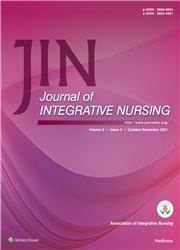Effect of structured education program on physiological and psychosocial outcomes in type 2 diabetes patients: A randomized controlled trial
Q4 Nursing
引用次数: 1
Abstract
Objective: This study was conducted to compare the effect of structured education program versus traditional diabetes education on insulin injection technique as well as physiologically and psychosocially related outcomes in adults with Type 2 diabetes. Materials and Methods: This study was a randomized controlled trial. Totally, 71 Type 2 diabetes patients of using the insulin pen were enrolled and randomly divided into the intervention group (n = 36) and the control group (n = 35) according to random number table method. Patients in the intervention group received structured education program, while patients in the control group received traditional diabetes education. The levels of glycosylated hemoglobin (HbA1c), blood glucose, and lipids were monitored before and 3 months after intervention, and the insulin injection techniques, diabetes distress, and diabetes self-management skills between groups were assessed after 3 months. Results: Finally, 65 participants (intervention group: n = 33, control group: n = 32) finished the study. After the intervention, HbA1c was lower (7.42 ± 0.80 vs. 8.35 ± 1.40, P = 0.002), fasting blood glucose (FBG) was lower (7.27 ± 1.06 vs. 9.40 ± 3.16, P < 0.001), and postprandial blood glucose (PBG) was lower (10.33 ± 2.20 vs. 12.77 ± 4.94, P = 0.012) in the intervention group than in the control group. No statistically significance was identified between the two groups in scores of Diabetes Distress Scale and summary of diabetes self-care activities. Conclusion: Patients with Type 2 diabetes received structured education program, with greater improvements achieved in HbA1c, FBG, PBG, and measures about insulin injection techniques compared to the traditional education group, but there was no significant difference in diabetes distress or self-management behavior between groups.结构化教育计划对2型糖尿病患者生理和社会心理结局的影响:一项随机对照试验
目的:本研究旨在比较结构化教育计划与传统糖尿病教育对成人2型糖尿病患者胰岛素注射技术以及生理和心理社会相关结局的影响。材料与方法:本研究为随机对照试验。共纳入71例使用胰岛素笔的2型糖尿病患者,按随机数字表法随机分为干预组(n = 36)和对照组(n = 35)。干预组患者接受结构化教育,对照组患者接受传统的糖尿病教育。监测干预前和干预后3个月的糖化血红蛋白(HbA1c)、血糖和血脂水平,3个月后评估两组胰岛素注射技术、糖尿病窘迫和糖尿病自我管理技能。结果:最终有65名参与者(干预组:n = 33,对照组:n = 32)完成研究。干预后,干预组HbA1c低于对照组(7.42±0.80比8.35±1.40,P = 0.002),空腹血糖(FBG)低于对照组(7.27±1.06比9.40±3.16,P < 0.001),餐后血糖(PBG)低于对照组(10.33±2.20比12.77±4.94,P = 0.012)。两组在糖尿病困扰量表得分和糖尿病自我护理活动总结得分上无统计学意义。结论:2型糖尿病患者接受了结构化的教育方案,与传统教育组相比,在HbA1c、FBG、PBG、胰岛素注射技术方面均有较大改善,但在糖尿病困扰和自我管理行为方面组间无显著差异。
本文章由计算机程序翻译,如有差异,请以英文原文为准。
求助全文
约1分钟内获得全文
求助全文
来源期刊

Journal of Integrative Nursing
Nursing-General Nursing
CiteScore
0.40
自引率
0.00%
发文量
3
审稿时长
17 weeks
 求助内容:
求助内容: 应助结果提醒方式:
应助结果提醒方式:


